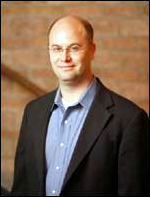
Todays Supreme Courts ruling on Ten Commandments displays on government land and inside courthouses came as no surprise to close observers of the courts recent First Amendment decisions, according to Notre Dame Law Schools Professor Richard Garnett.
Garnett said that the decisions inMcCrearyCountyvs. ACLU and Van Orden vs. Perry broke little new legal ground.A 5-4 majority of the justices allowed a monument displaying the Commandments on the grounds of theTexasstate capitol, but a different 5-4 majority disapproved a fairly new framed display in aKentuckycourthouse.
While these outcomes were expected, Garnett said, he did not expect the votes of two particular justices in theTexascase:Justice Stephen Breyer voted to permit the monument, while Justice Sandra OConnor did not.Garnett thought it unusual that Justice Breyerand not, as is often true in church-state cases, Justice Kennedy or OConnor, provided theswing votein theTexascase, emphasizing his view that the Ten Commandments monument display was permissible because it was not excessivelydivisive.
In theTexascase, Garnett said,Chief Justice Rehnquist made it clear that the reason some public displays of the Ten Commandments are permissible is not that they are non-religious, but that the Constitution permits governments to acknowledge and accommodate, in a non-coercive way, religious traditions, practices, and beliefs.As Rehnquist put it, simply having religious content or promoting a message consistent with a religious doctrine does not run afoul of the Establishment clause.
Its extremely difficult to draw any sweeping conclusions, or extract any bright-line rules, from todays decisions,Garnett said.As a general rule, in cases involving public displays of religious symbols and texts, Justice OConnors approach and, therefore, the courts, is to ask whether a hypothetical reasonable observerwould perceive a government purpose of making adherence to a religion relevant in any way to a persons standing in the political community.Unfortunately, this amorphous endorsement testinvites at least as many tough questions as it answers, as todays divided decisions confirm.After all, as Chief JusticeWarren Burger once noted, we have an unbroken history of official acknowledgment by all three branches of government of the role of religion in American life.But when does acknowledgmentgo too far, and become a marginalizing endorsement?Were still struggling to find that Goldilockspoint, the just rightplace between an ahistorical pervasive secularism, on the one hand, and state-managed orthodoxy, on the other.
Garnett also expressed concern about the implications of Justice Breyers focus on religious divisiveness and social conflict.
It is a mistake to rely on judgesviews, or feelings, about the divisivenessof state action and religious expression for our First Amendment standards,Garnett said.Disagreement and division might be unfortunate, and unsettling, but they are also an unavoidable part of the political life of a diverse and free people.
* Contact: * _Professor Richard Garnett at 574-631-6981 or Garnett.4@nd.edu _
TopicID: 11943